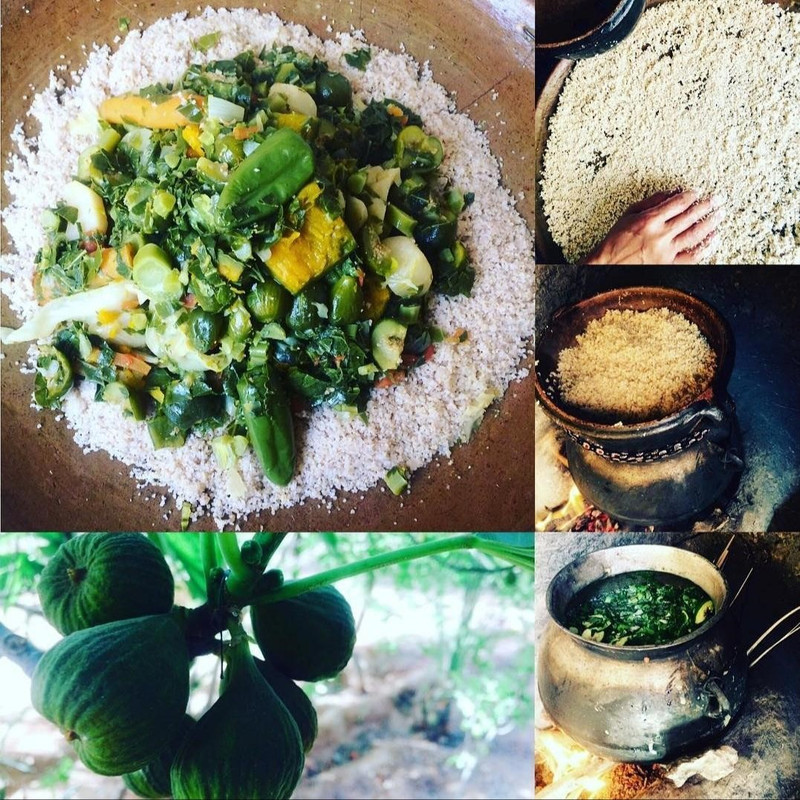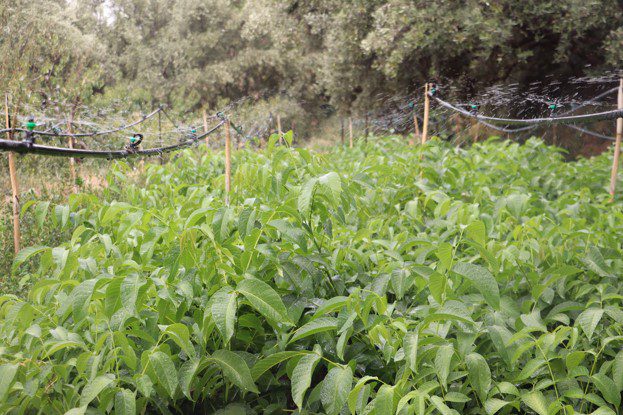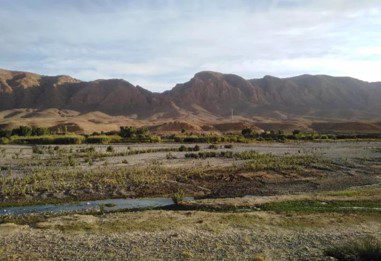By Soukaina Kherdioui, HAF Field Coordinator, REMA Program

Tilouine, a small village in southeastern Morocco, is known for their sweet Fagous dates and olive groves. Photo taken in 2015 by REMA Field Coordinator Soukaina Kherdioui.
Tilouine is my mother’s hometown. It’s a small village located on the outskirts of Errachidia. I still recall the time I used to travel along with my mother and siblings to spend our one-month summer vacation at my grandparents’ house. I have to admit that it was not the place where I would have preferred to spend my long-awaited holiday. Six-year-old Soukaina would describe Tilouine as a plain, boring piece of land that teems with palm trees and olive groves. My time there was made even more unpleasant with the scorching heat. For years, I had felt no connection with “that” place. The only silver lining to my yearly trip to my mothers’ hometown was the time I got to spend with my grandparents. Yet, I eagerly awaited our return to Rabat, the place where I was born and raised, the place I called home.
But the older I get, the closer I feel to my origins. Storytelling has played an essential role in strengthening the bond with my roots. Listening attentively to stories as I lay my head in my mother’s lap has become a pastime I cherish the most. As her fingers run gently through my dark, wavy hair, she recalls some of her childhood memories, and I unconsciously travel back in time, reliving every single moment she recounts.
The Jewish Craftsman
“You know bnti (my daughter), all faiths coexisted in the past and lived in harmony in our times. Although my hometown was solely inhabited by Muslim people, I still remember the story of a Jewish man that your grandmother used to tell me about.” I lay flat on my back, closed my eyes and listened attentively. “There was a time when a Jewish silversmith used to travel from Erfoud to our village on a weekly basis. He roamed Tilouine’s narrow lanes and alleys on his mule, shouting to let everyone know of his arrival. He was known for his exquisite jewelry-making skills. Most women, including your grandmother, relied on his service to custom design authentic pieces of silver earrings, necklaces, hinged bracelets and rings, which they kept for generations. He would spend the entire day working at the entrance of the village, and, after Ṣalāt al-ʿishā ̓ (evening prayer), men leaving the mosque would invite him for dinner and accommodate him for the night. As such, many households would take turns each week hosting him.”
Celebrating Eid Al-Mawlid al-Nabawī (the Birth of Prophet Mohammed PBUH)
“The celebration of Eid Al-Mawlid used to be my favorite time of the year, mainly because it brought together the whole community,” continues my mother. “On the day of the event, the entire community gathered around freshly prepared couscous. But trust me, Soukaina, it tasted nothing like the typical couscous we ate every Friday. You know what was the secret ingredient, bnti?”

Couscous with ‘kouran’ (the first batch of figs falling off the tree) is a typical local delicacy in Tilouine.
Photo by: Soukaina Kherdioui, REMA Field Coordinator, 2015.
I quickly grabbed my phone and waited for her to unravel the secret ingredient so that I could add it to my collection of food recipes. She answered with a big smile on her face. “What makes this couscous so special is the fact that each household brought an ingredient and contributed to the celebration. I remember your grandmother picking homegrown carrots, filling up a jar with smen (fermented butter) and bringing it to the house where the celebration was to be held. Added to this were the moments of laughter and joy we shared while cooking up the meal. It was the sharing of such simple details that made such moments memorable, not the meal itself, bnti.”
Listening to my mother’s stories was indeed enjoyable, but also thought-provoking. Had it not been for the collections of stories my mother and my grandmother kept from their childhoods only to later share them with me over hours of storytelling throughout my own childhood, an essential part of our family’s identity would have been lost. These stories from the past managed to create the sense of belonging I had so longed for. Nowadays, whenever I get the chance to visit my mother’s hometown, I get hit with a wave of nostalgia as I make my way through the narrow alleyways and as I pass by the spot where the Jewish silversmith used to produce marvelous pieces of art. Tilouine is no longer a plain, boring piece of land to me. Now, it is a place full of history, of interfaith and intergenerational dialogue.
Placing storytelling at the heart of its interest, the USAID Religious and Ethnic Minorities Activity (REMA) implemented by the High Atlas Foundation (HAF) aims to celebrate Morocco’s multiculturalism and religious diversity through identifying, collecting, and recording the stories of the past that lay the groundwork for a prosperous future marked by acceptance. The stories of the Jewish craftsman and the celebration of Eid Al-Mawlid al-Nabawī are living proof that Morocco has always been an outstanding model of coexistence. It is then my aim through the REMA program to highlight our country’s cultural and religious diversity, an essential aspect of our national identity, by documenting local communities’ past and present stories of peaceful coexistence and interreligious harmony.
____
Soukaina Kherdioui has recently joined the High Atlas Foundation team as a Field Coordinator for the USAID Religious and Ethnic Minorities Activity (REMA). She is heavily committed to understanding Morocco’s great human mosaic and strives to understand the life experiences of previous generations whose stories formulate history and shape current identities.
Join HAF on this learning journey as we unravel stories of Morocco’s cultural diversity and interfaith dialogue via the REMA program.






